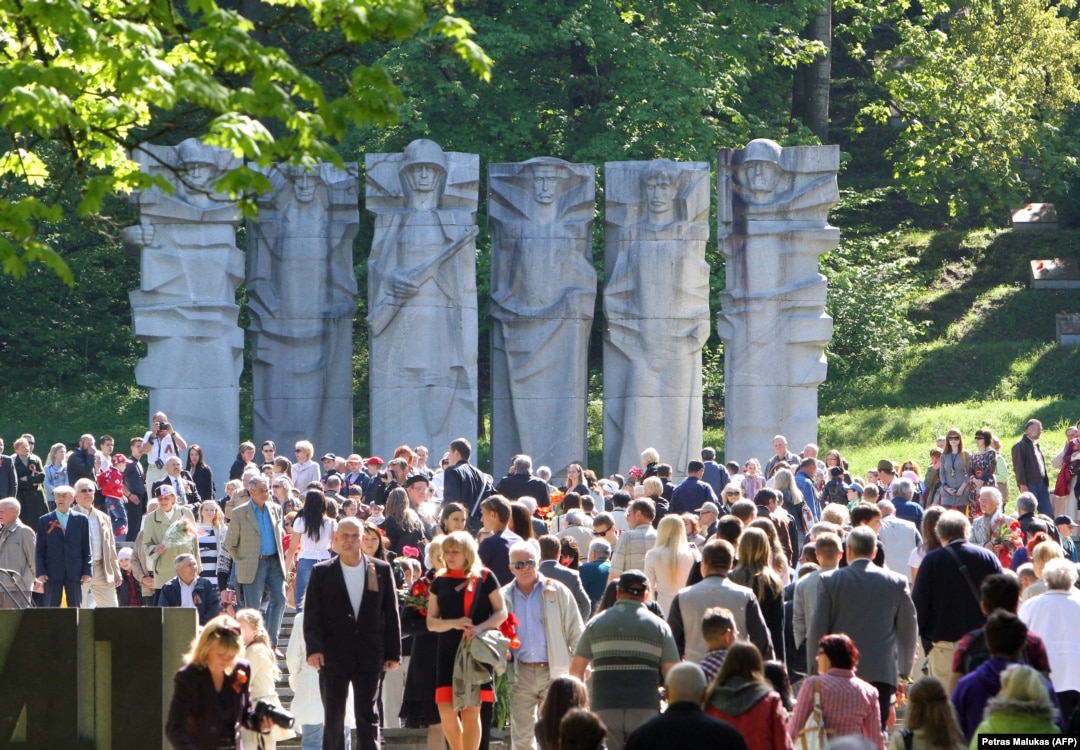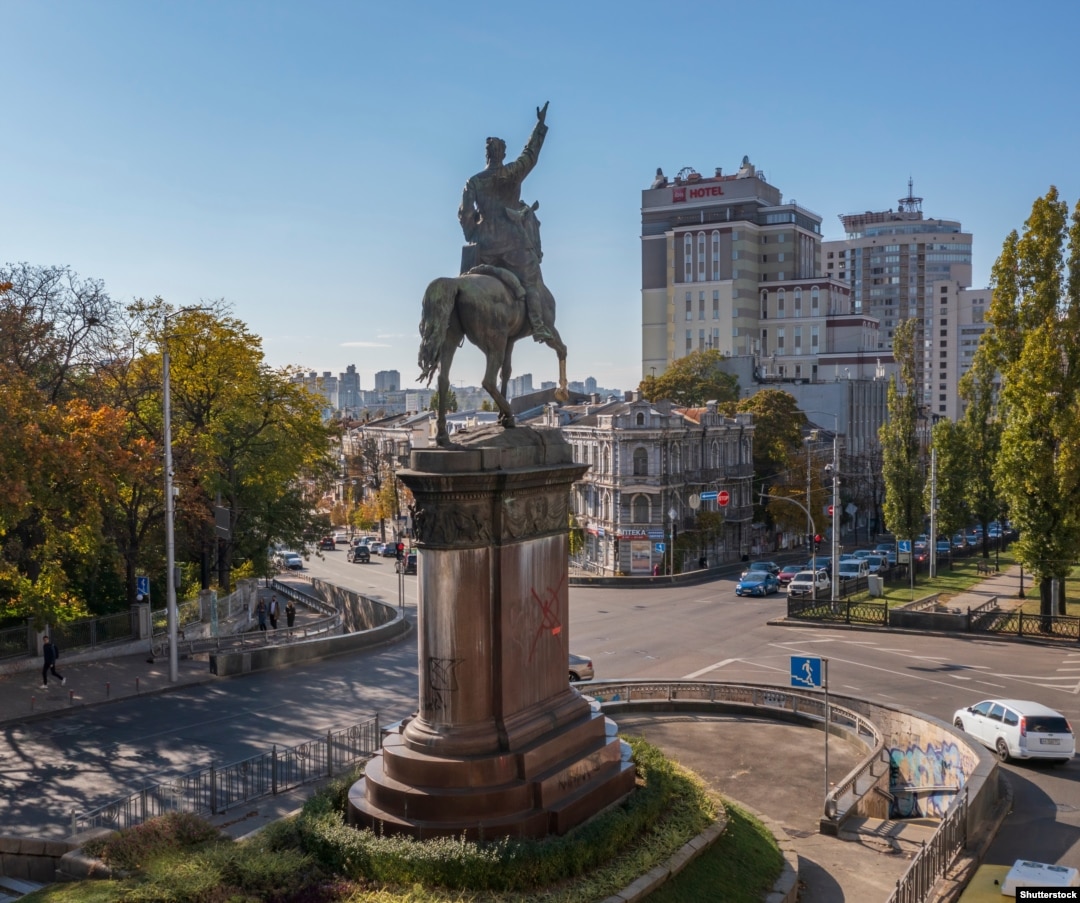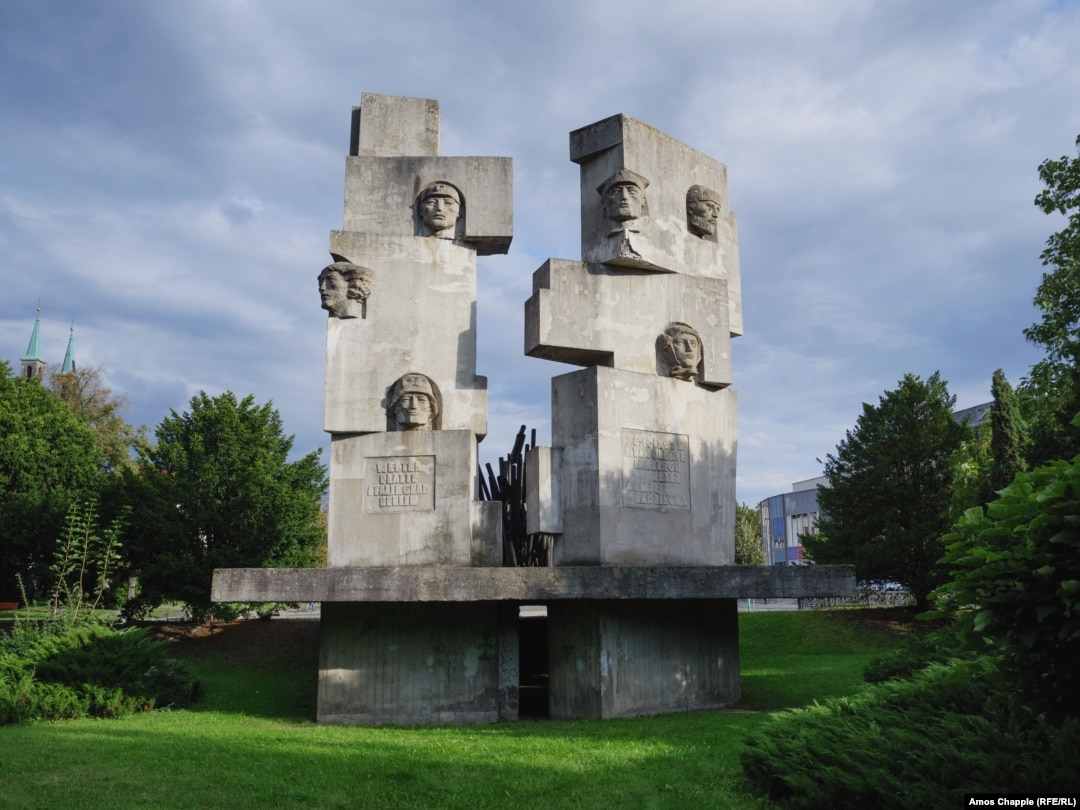Gone To Ground: The Soviet-Era Monuments Removed Since Russia's Invasion Of Ukraine

Crowds gather at a memorial to Soviet soldiers in the Antakalnis cemetery in Vilnius in May 2013. The brutalist sculptures were torn down in December 2022 after an earlier UN Human Rights Committee injunction had paused the work.

A monument to tsarist, then Red Army, military commander Nikolai Shchors in central Kyiv. The monument was repeatedly vandalized before being taken down on December 9, 2023. In this October 2021 photo, the horse’s replacement front leg can be seen after the original bronze limb was sawn off by unknown activists.

A monument in Brzeg, southeastern Poland, to “Polish-Soviet brotherhood” photographed in 2017. The central landmark was torn down on August 24 – Ukraine’s Independence Day -- in 2022.
A Soviet-era monument to “Ukraine-Liberators” in Uzhhorod, western Ukraine, that stood at the border with Slovakia. The monument was pulled down in November 2022.
The Monument to the Soviet Army in Sofia, photographed in August 2023. The statues atop the column were cut into pieces with angle grinders and lowered to the ground in December 2023. Local authorities have claimed they will restore the dissected statues and put them on public display in an unspecified location.
A June 2018 photo of the two main figures of a Soviet-era landmark originally called the Monument to Commemorate the Reunification of Ukraine with Russia in central Kyiv. The statues, representing a Russian and Ukrainian worker uniting under a Soviet state emblem, were cut down in April 2022. One month later, the monument complex, which is marked by a large titanium arch, was renamed the Arch of Freedom of the Ukrainian People.
A Soviet war memorial in Daugavpils, Latvia, photographed in 2013. Dozens of people in the mostly ethnic Russian city were detained by police amid unrest as demolition of the monument began in October 2022.
A Soviet T-34/85 Tank in Narva, Estonia, on the border with Russia that marked the 1944 capture of Narva from Nazi forces, photographed in May 2022. The tank was hauled off its plinth and taken to a local museum in August 2022. In response to the controversial removal of the tank, Russian authorities installed a nearly identical monument in Ivangorod, just across the river border with Estonia, one month later.
A statue of Soviet test pilot Valery Chkalov in Kyiv in an undated photo. The monument was removed in February 2023.
A monument to Soviet founder Vladimir Lenin in Turku, Finland, photographed in 2018. The bust was presented as a gift from Turku’s sister city of Leningrad (now St. Petersburg) in 1977. In April 2022, the monument was removed and placed in storage, but in October 2023 a court ruled the removal was illegal, raising the possibility that Lenin could be returned to the site.
Riga’s Monument to the Liberators of Soviet Latvia and Riga from the German Fascist Invaders. The 79-meter-high obelisk at the center of the complex was toppled in August 2022. The park was reopened in November 2023 after extensive remodeling that saw the installation of a skate park and walkways.
The Defenders of Liepaja monument in western Latvia, photographed in September 2022. The statue, dubbed the “grenade thrower,” depicted a worker fighting the 1941 Nazi invasion of Latvia alongside a Soviet sailor and paramedic. The monument was taken down in October 2022.
The monument to the Liberators of Rezekne in eastern Latvia, photographed in 2011. The soldier, nicknamed “Alyosha,” was removed in November 2022.
A monument to Soviet military commander Nikolai Vatutin in central Kyiv. The monument was removed in February 2023.
Finland's last publicly displayed likeness of Lenin being removed from Kotka, in southeastern Finland, in October 2022.

